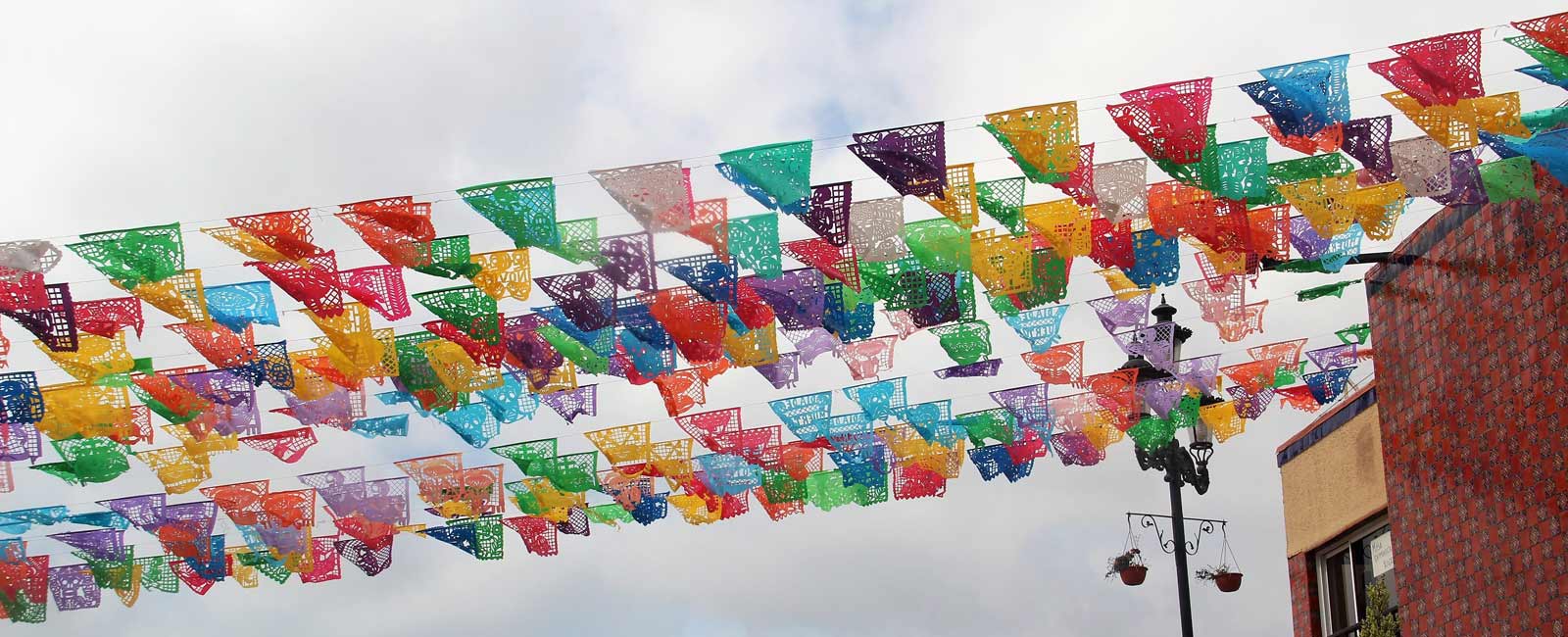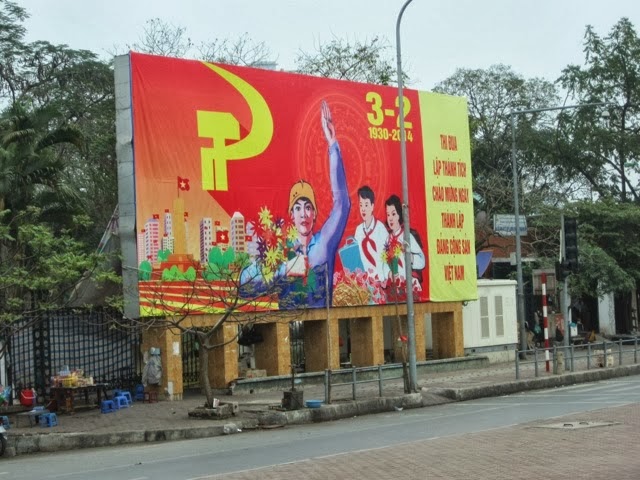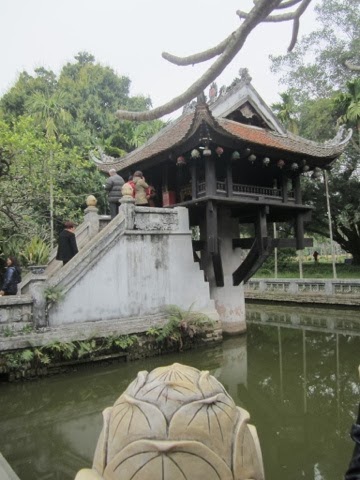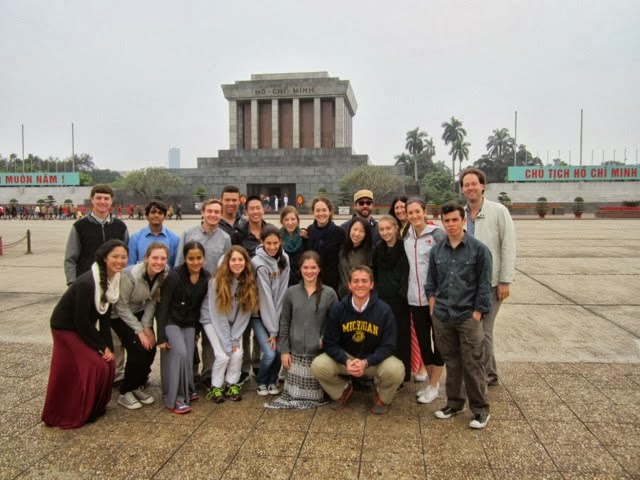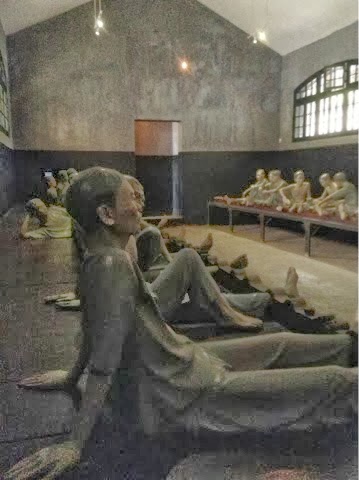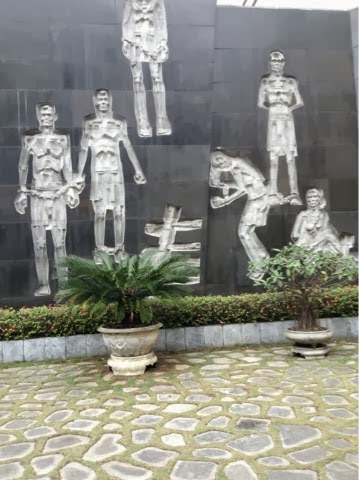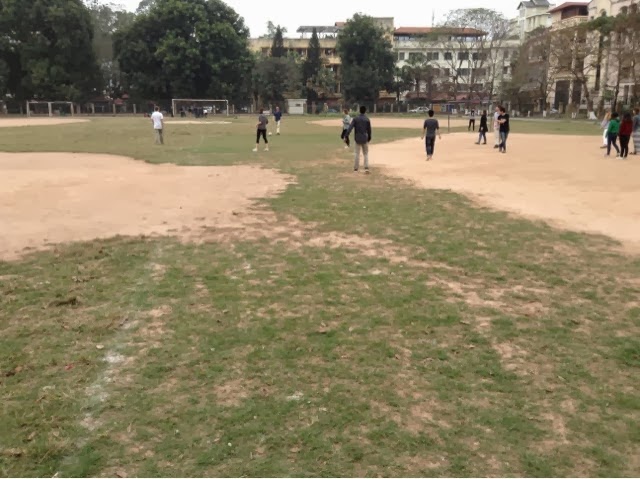Francis Parker - Vietnam 2014
Day 2: Hanoi
As we continued to engross ourselves in the city of Hanoi on our second day of travel, we slowly began to notice the influences on the city, especially the nationalism of a country that has only been liberated from foreign rule for such a brief time.
Visiting the tomb of Ho Chi Minh was very telling of the nationalism occurring in Hanoi. While Ho Chi Minh, who our tour guide Alex could only say the best of things about, was an extremely modest man, his mausoleum was a complete contrast to the lifestyle that he is so greatly admired for. As Alex explained, Ho Chi Minh was given the French colonial governor’s palace to live in as the presidential palace but instead opted to live in a normal electricians house which was nearby. If the late president could see what the Vietnamese government has done to his body, he might be furious, seeing as his wish was to be commemorated by three small shrines in each part of Vietnam: center, north, and south. This seems to be indicative of what we have been noticing so far in our trip; Vietnam is less involved in its communist ideals and instead idolizies its nationalism above all else. The Vietnamese are exceptionally proud of their victory over the “imperialistic” French and Americans and have expressed this pride by creating a great tomb for the father of their country. While Americans may have once seen Ho Chi Minh simply as a murderer and leader of the communist regime, the Vietnamese value him as one of their greatest leaders, lovingly giving him the name “Uncle Ho,” as could be seen through the pure positivity of our tour guide Alex.
The nationalism continued as we made our way to the Hỏa Lò Prison, more commonly known to Americans as the Hanoi Hilton, which acted as a prison for both the Vietnamese during French rule and for US Air Force pilots during the Vietnam War. While touring the prison, we were shown a documentary portraying the war through the eyes of the Vietnamese. Obviously, to them, Americans were the invaders trying to impose views on a country fighting for its freedom. The US was an imperialist country while the Vietnamese were the brave souls fighting to save their families from the uncertain hell that would ensue were the United States to defeat the valiant Vietnamese soldiers. Clips were shown of the atrocities and “evil crimes” (direct quote) that the US soldiers had done to the Vietnamese, while the Vietnamese were portrayed in only the brightest light. To say that these documentaries were subjective would be an understatement, and it was fascinating to see the war through such a different perspective as the one that has been fed to us since the 6th grade.
Another large chunk on the documentary was dedicated to showing how well the Air Force pilots were treated at the Hanoi Hilton, which made us all smirk as we remembered the accounts of the prison we had heard from US veterans. The video stressed the Vietnamese ability to forgive, as most people would have wanted to torture and kill the men who hours before had been flying over Hanoi, flying the B-52 bombers. Whether or not this forgiveness was feigned or genuine, either way, It was surprising when we met our Hanoi University pen pals later in the day to see one of the students wearing a US Air Force sweatshirt during our tour of the campus and friendly soccer match. We may see the war as an unending hardship in the United States, but to the Vietnamese, it seems to have been just another chapter in their struggle for freedom. As Emily pointed out in our nightly debriefing, the “American war” was left out entirely in the pamphlet explaining the history of Vietnam on the plane.
From watching the city wake up during our morning runs to venturing our way through the organized chaos of traffic, it’s safe to say that this is like nowhere we have ever been before.
–Mark
Day 2 Photo Highlights
–Emily and Sanjay
